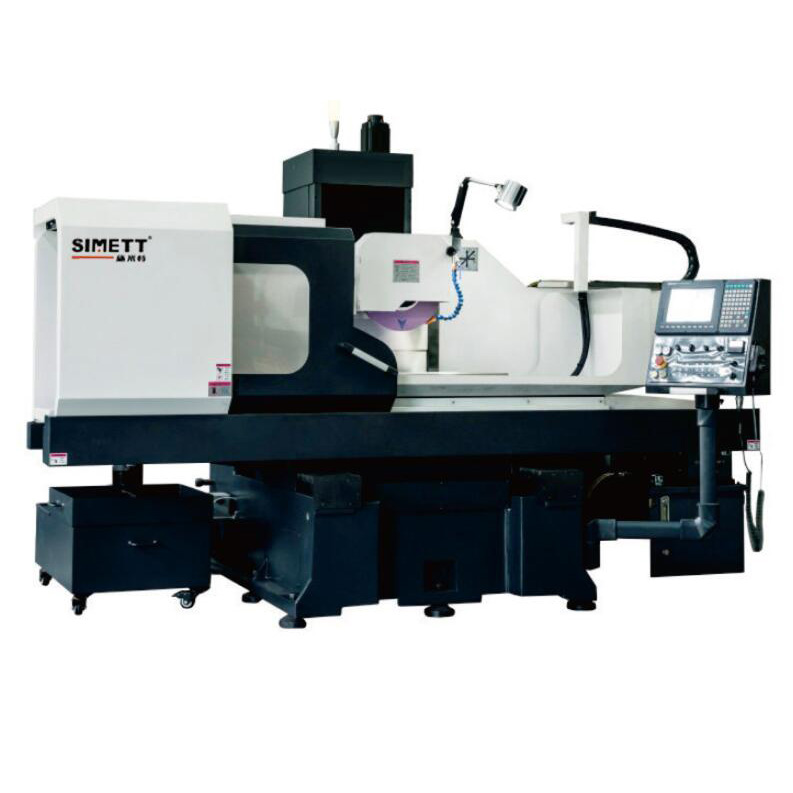How to buy a suitable surface grinder?
2025-04-18
1. See if the purpose is suitable
In fact, there are many types of surface grinders. As a user, the most important thing is to choose the equipment suitable for your own use according to the processing characteristics of various surface grinders.
In the selection of surface grinders, it is recommended not to choose products with too many functions and too complex structures. There is an old Chinese saying that "more temples mean more ghosts". Products with too many functions are not necessarily good products, especially on equipment that is frequently used for a long time. Many functions are rarely used. However, some copycat manufacturers have added many additional functions to create the so-called "highlights" for their products. This not only does not improve the efficiency and value of the equipment, but also affects the accuracy and stability of its main functions. There is a kind of misalignment that is not worth the loss.
The selection of mechanical equipment also pays attention to the characteristics of "specialization" and "simplification", and the same is true for surface grinders. As long as its most important function is done well, it is a good equipment. As long as the accuracy, stability and product service are done well, the product is a good product. There is no universal equipment in this world, only dedicated good equipment.

2. Is the structure of the surface grinder reasonable?
A qualified and standardized surface grinder design has very sophisticated steps in product structural processing, material selection, part wall thickness, heat treatment methods, etc. It is necessary to strictly calculate the material force, tensile strength, material deformation, and part stability, etc. However, this "insurance coefficient" is where they make tricks. For example, if we set the tensile strength of the equipment parts to 2 times the yield strength of the equipment parts in use, that is to say, in the structural design, material selection, part wall thickness and many other parameters, it must be greater than or equal to twice the yield strength of the parts to be qualified. However, in order to save costs, some manufacturers may only make the tensile strength of this part only 1.5 times the theoretical yield strength. From the actual use, it is definitely usable, because the yield strength of the parts is calculated according to extreme use conditions, but from the stability and reliability of the parts, there is a big gap between 1.5 times and 2 times, because the insurance coefficient is different. But for many users, they can't see this thing, and the risk of buying a surface grinder is also very high.
3. How to judge the quality of CNC grinding machine?
First, look at the structure, see whether the structural layout of the main parts is reasonable, and then see whether the appearance is symmetrical and uniform, whether it looks pleasing to the eye, and then see whether the inner cavity of the part has enough reinforcing ribs, whether the staggered reinforcing ribs have structural symmetry, uniform layout and other characteristics, and then check whether the plate rib thickness of the part is enough. It can also be judged by the weight of the whole machine. For the same type of machine tools, you must choose a heavier one. This is definitely not as simple as a few pounds of iron, because the processing equipment is an industrial mother machine, and the processing accuracy and stability mostly come from the reliability and stability of the structure and parts themselves. Sometimes, the value brought by a few more pounds of iron far exceeds the value of the few pounds of iron itself. Also, see whether the parts without putty are smooth and uniform, which is an important sign to judge whether the material is qualified. If the material is uneven, there will be a lot of sand inclusions, collapse, pores, etc. on the surface of the casting. If it is a guide surface and a work surface, you should also pay attention to whether there are pores and looseness. This is also a very important criterion for judging whether the surface grinder is of high quality.













